Cycling offers numerous benefits, from improving fitness to enjoying the great outdoors and even reducing your carbon footprint.
However, knee pain can be a common and frustrating issue for many cyclists, understanding the causes of knee pain, discovering effective solutions, and learning preventative measures are essential for maintaining a healthy and enjoyable cycling routine.
In this blog post, we’ll look at common problem areas, explore the causes, and give practical solutions to keep you riding pain-free.
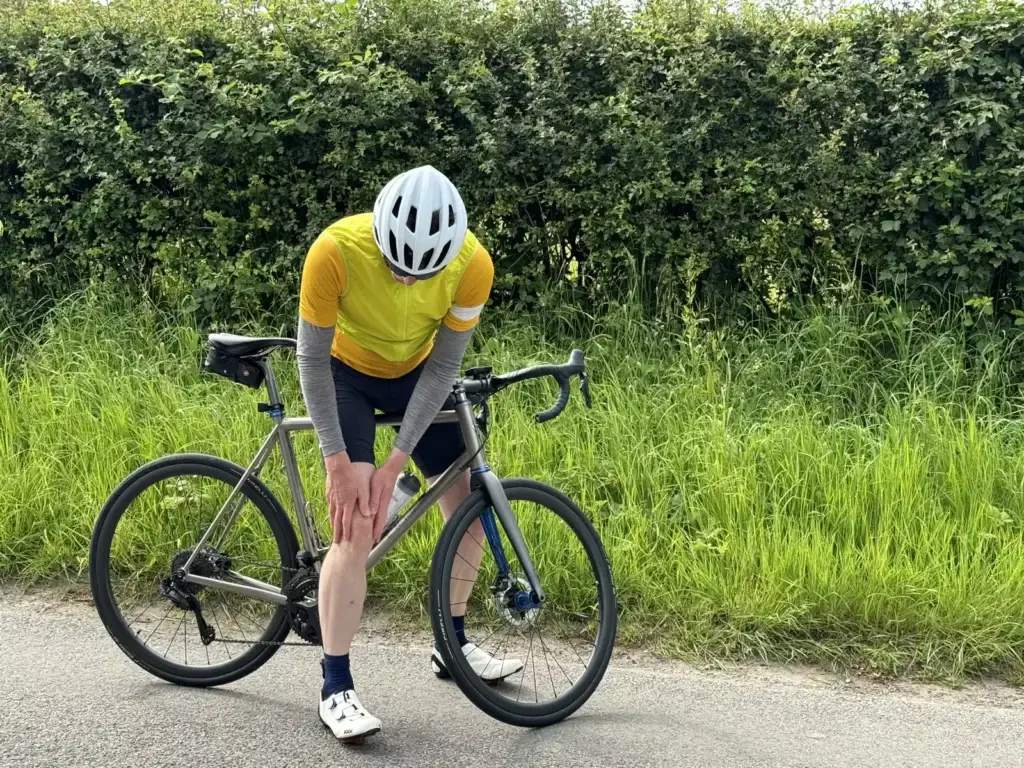
Understanding the Problem Areas
The Anatomy of the Knee
The knee is a complex joint that takes a lot of stress during cycling. It has bones, cartilage, ligaments, and tendons, all working together to help you move.
When any of these parts are strained or hurt, knee pain can happen. Cyclists often feel pain in the front, back, or sides of the knee, each pointing to different issues.
Front knee pain, often linked to the kneecap, can come from overuse or a bad bike fit. Pain behind the knee might be due to hamstring or calf muscle strain, while pain on the sides could mean problems with the iliotibial (IT) band or ligaments. Knowing these differences is the first step in fixing knee pain.
Common Overuse Injuries
Overuse injuries are common among cyclists because of repetitive motion and long periods of activity. Patellofemoral pain syndrome (PFPS), also known as “cyclist’s knee,” is a frequent problem. It happens when the cartilage under the kneecap gets irritated, often due to a bad bike fit or too much training.
Another common issue is iliotibial band syndrome (ITBS), where the IT band gets tight and inflamed, causing pain on the outer side of the knee.
Tendonitis, especially in the patellar or quadriceps tendons, can also come from overuse and lead to significant discomfort. Recognizing these conditions early can stop them from becoming long-term problems.
Intrinsic Factors
Intrinsic factors, like your body’s natural makeup, play a big role in knee pain. Things like leg length differences, foot pronation, and muscle imbalances can cause bad knee alignment and more stress on the joint. Cyclists with these issues are more likely to have knee pain and may need special help.
Fixing intrinsic factors often involves bike adjustments, targeted exercises, and sometimes orthotic devices. A professional assessment can help find these issues and create a plan to reduce their impact on your cycling.
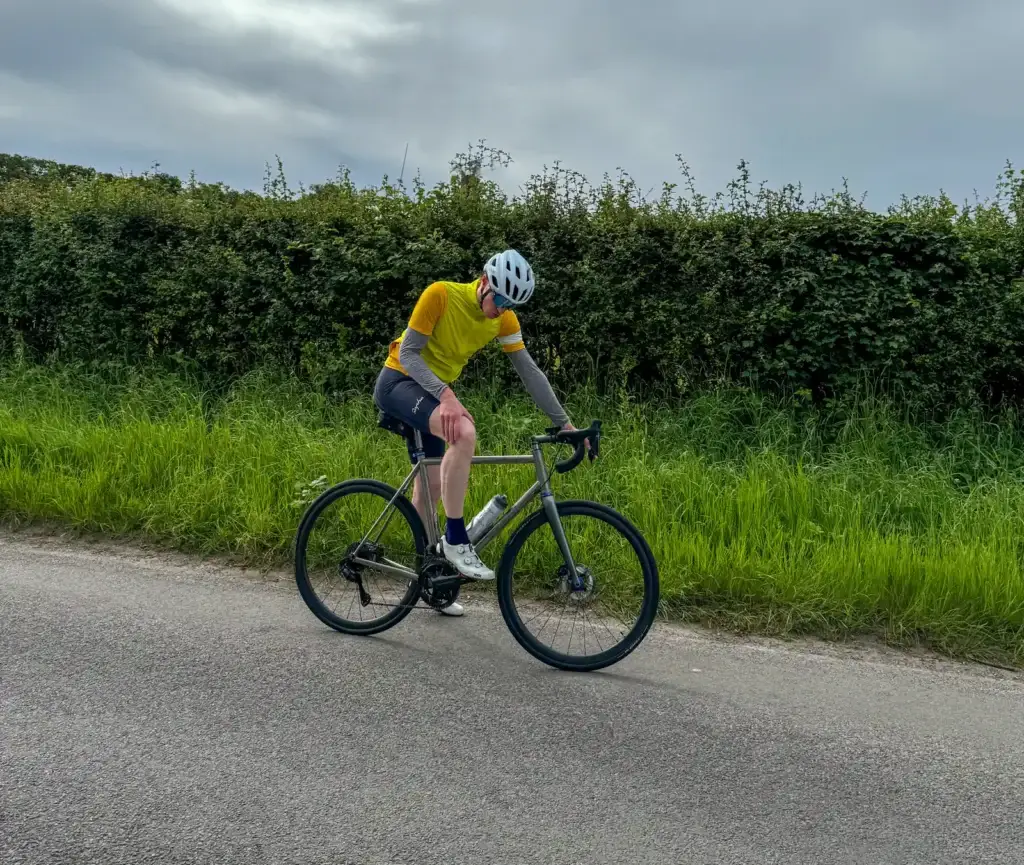
Identifying the Causes
Changes in Training Intensity
Sudden changes in training intensity or volume can lead to knee pain. Increasing mileage too quickly, adding intense hill climbs, or high-intensity intervals without enough preparation can strain the knee joint. It’s important to follow a gradual training plan that lets your body adapt to increased demands.
Monitoring your training load and including rest days can prevent overuse injuries. Also, cross-training with activities like swimming or strength training can help build overall fitness without overloading the knees. Listening to your body and adjusting your training is key to avoiding knee pain.

Equipment Adjustments
Your bike setup is crucial for preventing knee pain. A bad saddle height, wrong cleat position, or misaligned handlebars can all cause knee discomfort. Making sure your bike fits your body is essential for a pain-free ride.
A professional bike fitting can fix these issues by adjusting saddle height, fore-aft position, and handlebar reach. Small changes in equipment can make a big difference in knee comfort. Regularly checking and maintaining your bike setup can stop knee pain from coming back.
Biomechanical Considerations
Biomechanical factors, like pedalling technique and muscle imbalances, can also cause knee pain. Poor pedalling mechanics, like too much knee movement or bad foot alignment, can strain the knee joint.
Strengthening the muscles around the knee and improving flexibility can make your pedalling more efficient and reduce pain. Adding exercises that target the quadriceps, hamstrings, and glutes can help balance muscle strength and support the knee.
Stretching routines that focus on the IT band, hip flexors, and calves can improve flexibility and reduce tension on the knee. A well-rounded approach to biomechanics can greatly improve knee health.
Practical Solutions
Proper Bike Fit
A proper bike fit is key to preventing knee pain. Making sure your saddle height, fore-aft position, and handlebar reach are correctly adjusted can reduce stress on the knee joint.
A professional bike fitting can provide personalized adjustments based on your body measurements and riding style. Regularly checking your bike fit, especially after making changes to your equipment or feeling discomfort, is crucial.
Small adjustments can make a big difference in knee comfort. Investing in a professional bike fitting can save you from long-term pain and improve your overall cycling experience.
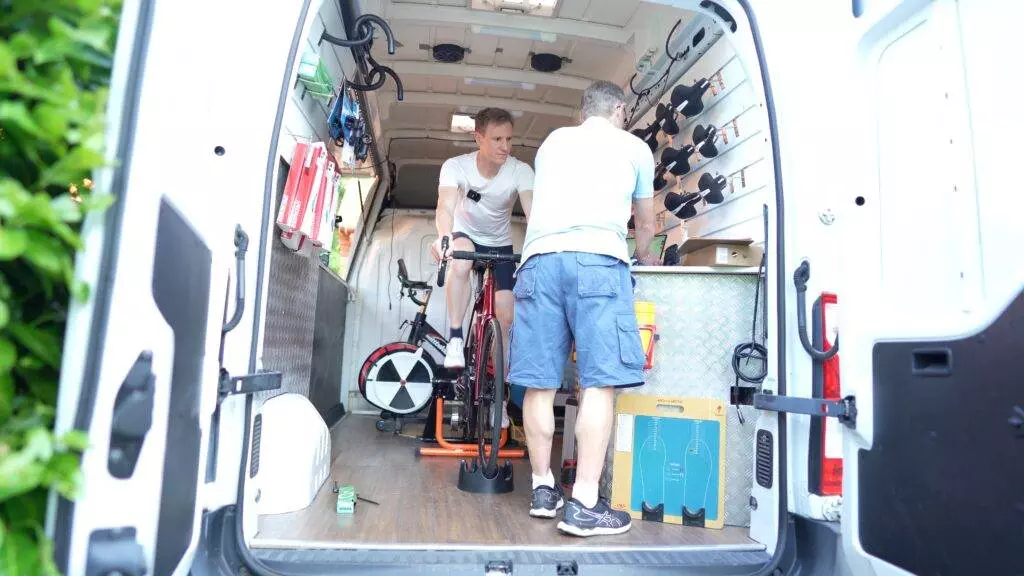
Strengthening and Stretching
Strengthening the muscles around the knee and keeping flexibility are vital for preventing knee pain. Adding exercises that target the quadriceps, hamstrings, and glutes can provide stability and support to the knee joint.
Stretching routines that focus on the IT band, hip flexors, and calves can improve flexibility and reduce tension on the knee.
Consistency is key when it comes to strength and flexibility training. Add these exercises into your regular routine to build resilience and prevent knee pain. Working with a physical therapist or trainer can ensure that you are doing exercises correctly and effectively.
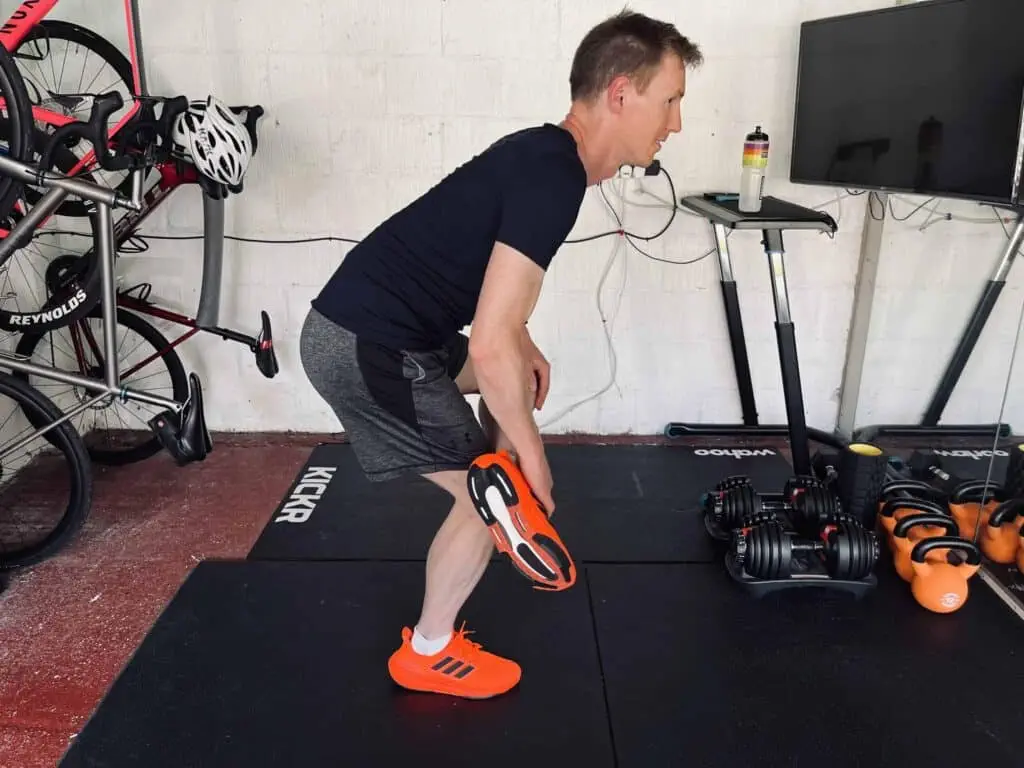
Gradual Training Progression
Avoiding sudden increases in training intensity or volume is essential for preventing knee pain. Gradually building up your mileage and including rest days can help your body adapt to increased demands. Cross-training with activities like swimming or strength training can provide variety and reduce the risk of overuse injuries.

Listening to your body and adjusting your training plan based on how you feel is crucial. Pushing through pain can lead to more severe injuries and longer recovery times. A balanced and gradual approach to training can keep you on the bike and pain-free.
Prevention Strategies
Regular Maintenance and Check-ups
Regular maintenance of your bike and periodic check-ups with a professional can prevent knee pain. Making sure your bike is in good condition, with properly adjusted components, can reduce the risk of discomfort.
Regularly checking your bike fit and making necessary adjustments can keep you riding comfortably. Scheduling periodic check-ups with a bike fitting specialist or physical therapist can help find potential issues before they become problems. Preventive measures can save you from long-term pain and improve your overall cycling experience.
Listening to Your Body
Paying attention to your body’s signals is crucial for preventing knee pain. If you feel discomfort or pain, it’s important to address it quickly rather than pushing through.
Resting, adjusting your training plan, and seeking professional advice can prevent minor issues from becoming long-term problems.
Developing a keen awareness of how your body responds to different training loads and bike setups can help you make informed decisions. Taking a proactive approach to your health and well-being can keep you cycling pain-free and enjoying the ride.
Incorporating Rest and Recovery
Rest and recovery are vital parts of any training plan. Allowing your body time to recover between rides can prevent overuse injuries and reduce the risk of knee pain. Including rest days, proper nutrition, and enough sleep can improve your overall performance and well-being.
Balancing intense training sessions with rest and recovery can help you achieve your cycling goals without compromising your health. Prioritizing recovery can lead to long-term success and enjoyment in your cycling journey.
Looking Ahead
Innovations in Bike Technology
Advancements in bike technology continue to improve the cycling experience and reduce the risk of knee pain. Innovations in bike fit systems, adjustable components, and ergonomic designs can improve comfort and performance. Staying informed about the latest developments in bike technology can help you make informed decisions about your equipment.
Exploring new technologies and adding them into your cycling routine can provide extra support and reduce the risk of knee pain. Embracing innovation can improve your overall cycling experience and keep you riding comfortably.
The Role of Professional Guidance
Seeking professional guidance from bike fitting specialists, physical therapists, and trainers can provide valuable insights and personalized solutions for preventing knee pain.
Professional assessments can find underlying issues and create tailored plans to address them. Investing in professional guidance can lead to long-term success and enjoyment in your cycling journey.
Building a support network of professionals who understand your goals and challenges can provide ongoing support and motivation. Working with experts can improve your overall performance and well-being.
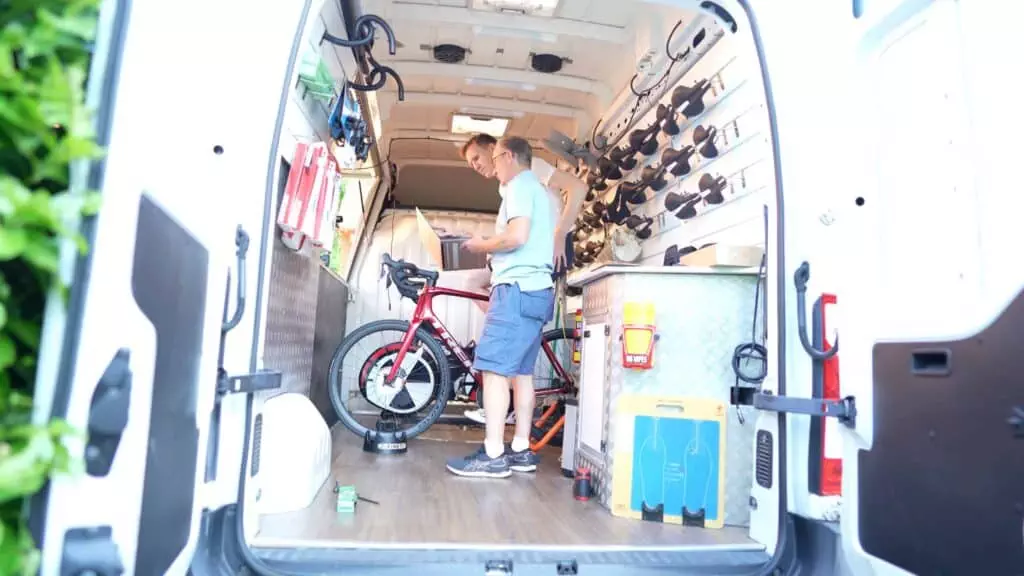
Conclusion
Knee pain doesn’t have to be a part of your cycling experience. By understanding the common problem areas, identifying the causes, and using practical solutions, you can enjoy pain-free rides and achieve your cycling goals.
Prioritizing proper bike fit, strength and flexibility training, and gradual training progression can keep you pedaling comfortably.
Embracing preventive strategies and seeking professional guidance can improve your overall cycling experience and keep you riding pain-free for years to come.
